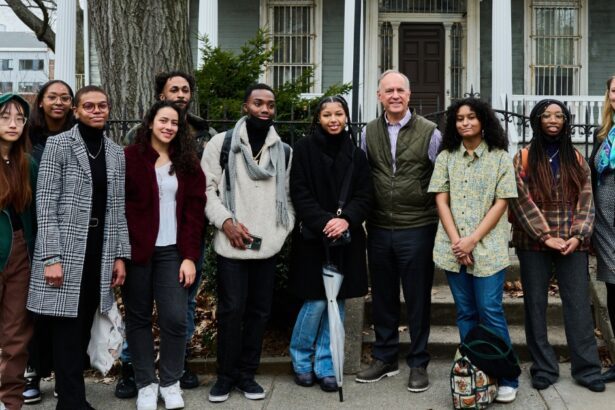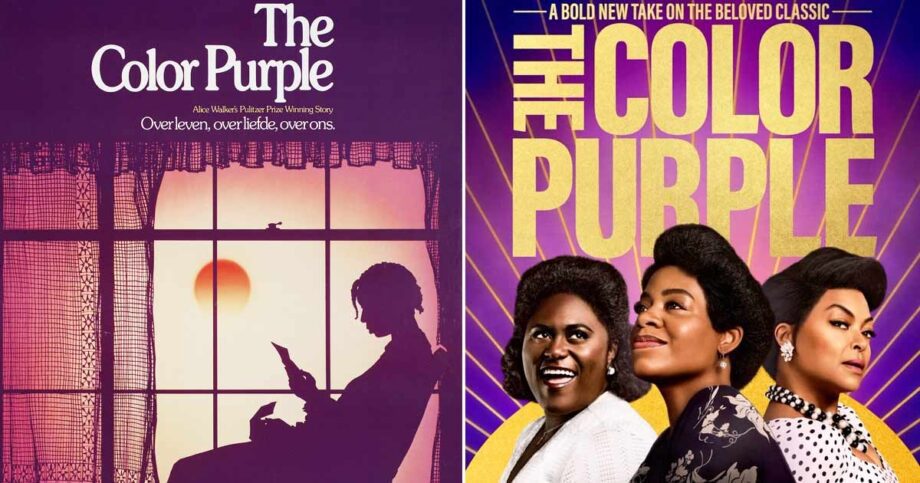In December 2023, the movie ‘The Color Purple’ marked 36 years since its release, making an impact on the portrayal of Black stories in movies. Adapted from Alice Walker’s Pulitzer Prize-winning novel of the same name, the film depicts the challenges faced by Black women in the early 1900s. Whoopi Goldberg’s portrayal of the character Celie Harris Johnson earned her a Golden Globe award and an Oscar nomination for Best Actress, while Oprah Winfrey played the role of Sofia.
Even today, the movie continues to resonate deeply with audiences. It showcases the pain and resilience of Black women, even in the most difficult circumstances, and has had a profound impact on many lives.
Since its original release in 1985, ‘The Color Purple’ has been reimagined as a Broadway production, and now, a new musical film adaptation based on the Tony-winning play has been released. This new version stars Taraji P. Henson, Fantasia Barrino, Danielle Brooks, H.E.R., and other talented actors, including Colman Domingo and Corey Hawkins.
The story follows Celie, a dark-skinned Black woman navigating her journey from girlhood to adulthood in the early 1900s. Despite enduring abuse and neglect, Celie eventually finds redemption, love, and the strength of sisterhood.
So, how does the new 2023 film compare to the original 1985 movie?
‘The Color Purple’ is a shared experience, and the new film stays true to this tradition. The captivating visuals and modernized music and choreography add a contemporary touch while preserving the essence of the original film.
One noticeable difference is the absence of Celie’s narrative. In the original film, her letters to God are portrayed through voiceovers, based on the book. However, this narration is not included in the new musical adaptation.
In the original film, Celie’s mother is never shown on screen and is only referenced through voiceovers. In the new version, her mother briefly appears in flashbacks at the start of the movie, adding depth to Celie’s character.
Additionally, the new version introduces a midwife character during Celie’s childbirth scene, whereas in the original, only her sister Nettie is present. This change incorporates a special appearance by Whoopi Goldberg, who played Celie in the original film.
However, some iconic phrases and scenes from the original movie are missing in the remake, such as the heartfelt hand-clap between Celie and Nettie. The absence of these familiar moments may disappoint some fans.

Other moments, such as the child telling Harpo “It’s gon rain on yo head,” and Shug Avery’s remark on Celie’s appearance, are also absent from the new version. These are cherished scenes that contribute to the emotional depth of the story.
Nevertheless, some beloved scenes, including Sofia’s powerful “All my life I had to fight!” speech, remain in the new adaptation. The movie continues to captivate audiences with its impactful storytelling.
The New Adaptation of The Color Purple: How Does It Differ from the Original?
In this reimagined version, some relationships were slightly deviated from the original, whether added on or presented as a new perspective.
Shug Avery (played by Henson in the new and Margaret Avery in the original) is one of Celie’s closest friends. Their friendship enters a new territory when they begin to have an intimate relationship, though in the original movie, this is not fully brought to life and the two only share a kiss. In the new movie, not only do they kiss, but they sing an emotional duet and obviously spend the night together. Additionally, in the original, Shug serenades Celie in the juke joint with the song Miss Celie’s Blues. In the new movie, she serenades her on Celie’s birthday after they escape Mister’s house together.
Sofia (Brooks in the new and Winfrey in the original) is married to Harpo (Hawkins in the new and Willard E. Pugh in the original), who is Mister’s son from his previous marriage. She also serves as one of Celie’s closest friends. In the new film, when Sofia gets arrested for slapping a white man, Celie visits her in jail every week, and the entire family is there to greet Sofia when she’s eventually released. This is a different spin from the original.
Nettie is Celie’s younger sister and “the only person who loves her in the world.” In the original, we get the scene of Nettie teaching Celie how to read by placing names on different objects like “apple,” “iron,” and “kettle.” I missed this so much from the new film.
I believe the new version of the film places the central focus on the sisterhood surrounding Celie and how each of the women’s strength helps her out of her own situation. With that said, it’s expected to see their connections being delved more into.
Many of us were skeptical about this new version of such a classic film. I was 13 years old when the original was released, and I remember clinging to it for dear life. Even at such a young age, I recognized that The Color Purple was not about pain and suffering. Ultimately, it’s a story about love, family, sisterhood, and connection. At 13 years old, I was experiencing my own loneliness of just being a teenager. I felt unseen and unheard. It was something about being on that journey with Celie that connected me to her. I’ve seen the Broadway production and love the new musical film, but there is something incredibly special about the original film.
I realized that I don’t have to choose one or the other. I can embrace both versions and carry the power each holds. This latest version of The Color Purple is a different work from the Broadway show before it, and the film before that and the book before that, because every adaptation accomplishes its own purpose and appealing to different communities.
This is what The Color Purple, in all its iterations, is about. Alice Walker is not just a novelist, but an intellectual giant who has explored feminist and womanist theory. In In Search of Our Mother’s Gardens, Walker wrote, “To me, the black black woman is our essential mother, the blacker she is the more us she is and to see the hatred that is turned on her is enough to make me despair, almost entirely, of our future as a people.”
By the end of the film, you are well-fed through all the tears and laughter. This is the reason why Black women can laugh so much with a movie that on the surface seems dark. Because for Black people, especially Black women, laughter is how we heal. Laughter is how we find our way back — back home, back to each other, and back to ourselves.




